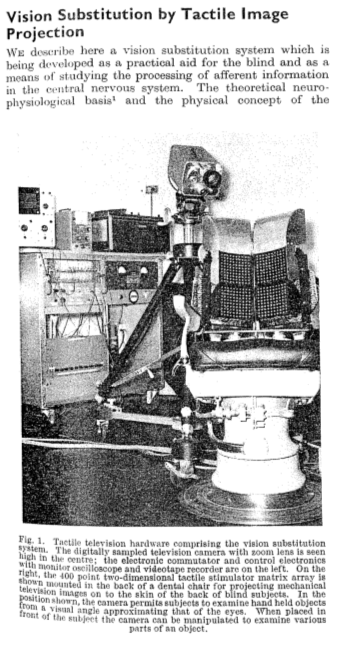

Two illustrations of Bach y Rita’s vision substitution system, in 1969.
“Four hundred solenoid stimulators are arranged in a twenty x twenty array built into a dental chair. The stimulators, spaced 12 mm apart, have 1 mm diameter “Teflon” tips which vibrate against the skin of the back (Fig. 1). Their on-off activity can be monitored visually on an oscilloscope as a two-dimensional pictorial display (Fig. 2). The subject manipulates a television camera mounted on a tripod, which scans objects placed on a table in front of him. Stimuli can also be presented on a back-lit screen by slide or motion picture projection. The subject can aim the camera, equipped with a zoom lens, at different parts of the room, locating and identifying objects or persons.
Six blind subjects have undergone extensive training and testing with the apparatus.”
[…]
“Our subjects spontaneously report the external localization of stimuli, in that sensory information seems to come from in front of the camera, rather than from the vibrotractors on their back. Thus after sufficient experience, the use of the vision substitution system seems to become an extension of the sensory apparatus.”